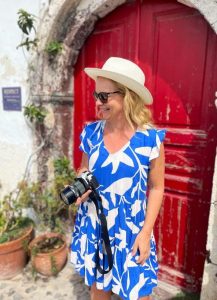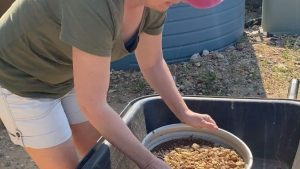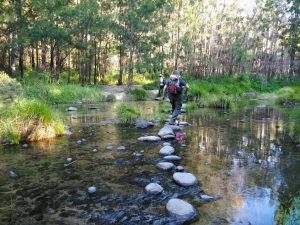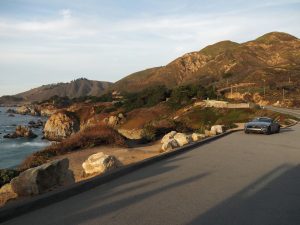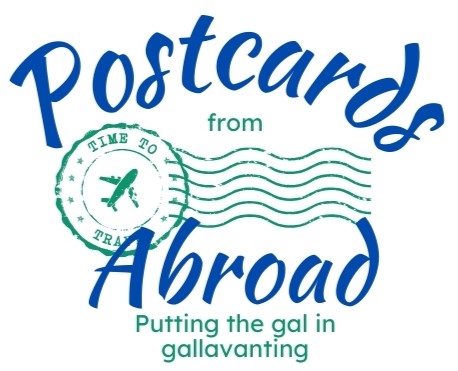To Go or Not To Go?
On our most recent travel adventure, in January 2024, I ticked off one of my biggest bucket list destinations – Egypt! It has been on my list for a very long time, but I have been hesitant about going due to what I perceived their attitudes towards women were – especially western women, and because I had heard that tourists are not very safe there.
I had many questions about Egypt as a travel destination and if you are considering going to Egypt you probably have the same questions. Therefore, I have written a separate post answering some of the big questions and discussing things that I wish I had known before I travelled to Egypt.
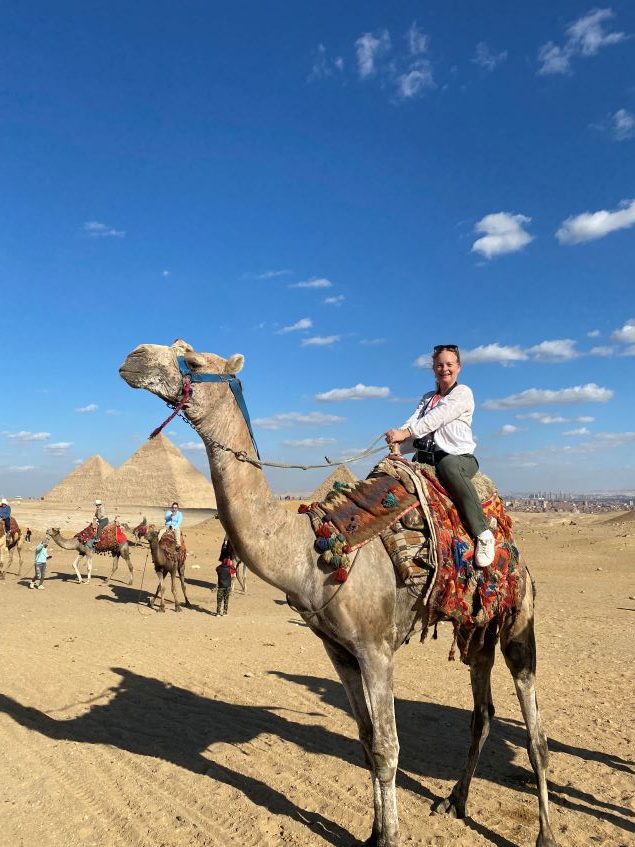
One thing I was certain of was that if we were going to Egypt, it would be with a reputable, well organized, high end, tour group that had good security measures in place. Our tour group of choice was Viking. At the time of booking, the conflict in the middle East had not begun. But about a month before our trip, war broke out in the region, and we had to make a decision, whether to cancel or go ahead as planned.
Long story short, we crossed all fingers and toes and proceeded as planned, confident in the reassurances from our tour company that if the situation became unsafe, they would cancel the tour and we would be refunded.
I am so glad we didn’t cancel!
Viking Pharaohs and Pyramids cruise
I started writing about Viking and our ship Viking Osiris and I was so impressed with them both that I realized they probably needed their own post. You can read more on my impressions of the Viking Osiris here.
I will add here, that we were fully expecting to be the youngest guests on the boat. Viking’s catch phrase is ‘the thinking person’s cruise’, so we were expecting retirees and grey nomads. I didn’t mind that at all, as our main focus on this trip was not partying! We were pleasantly surprised to find that there were actually quite a few guests around our own age and even younger. Is that just another sign that we are getting older?? We ended up making new friends and even partied just a little!
The tour we chose was the Pharaohs and Pyramids tour, which began and ended in Cairo.
Cairo
I will start by saying that the hotel we stayed in was lovely and we were very happy with it. Cairo itself though, is not a destination that I would rate very highly. The city is run down and covered in a constant film of dust (I know, unavoidable when adjacent to a desert). It is of course necessary to stay here to see the pyramids and the Egyptian museum, which is a must see, but having seen them now, I don’t have any desire to return to Cairo.
We were hoping the Grand Egyptian Museum (GEM) would be open by the time we arrived in Egypt. Unfortunately, it is still closed except for the foyer and another virtual display that didn’t really interest us. I had heard that most of the exhibits had been taken from the existing Egyptian museum to the GEM and there wasn’t much left to see. We were pleasantly surprised when we arrived to see so much! My favourite exhibits by far were the Tutankhamun Gallery which contains the famous gold mask) and the stunning silver coffin of Psusennes. No photography allowed inside the galleries, you’ll just have to see it for yourself!
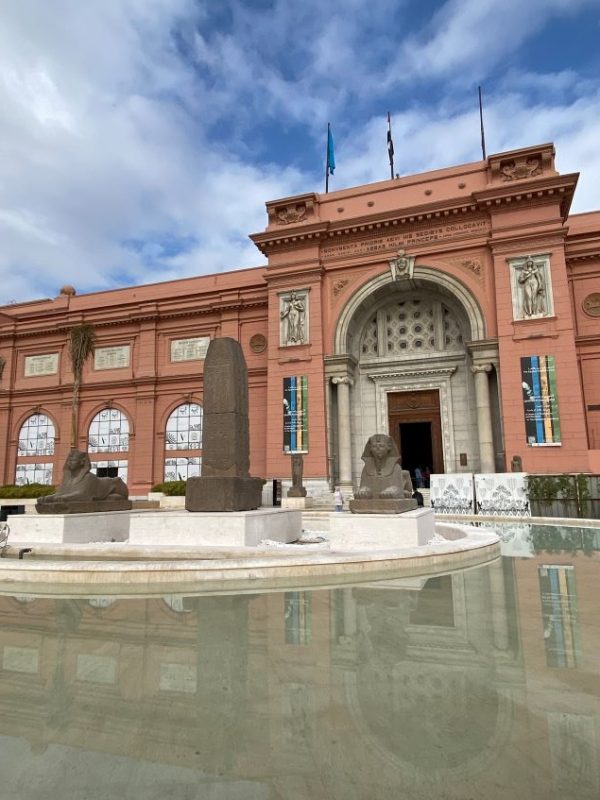
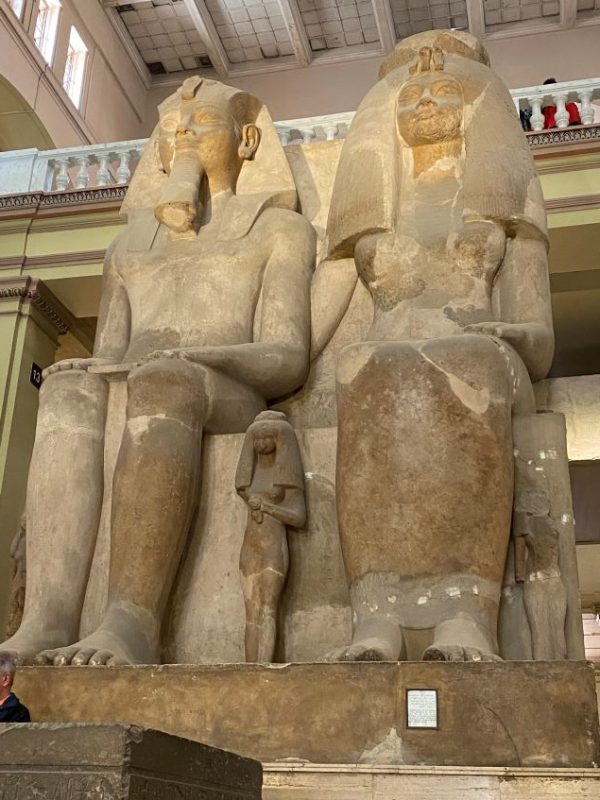
Some items of interest that we were allowed to photograph included a replica of the Rosetta stone. I didn’t realize the significance of this stone until it was explained to us that because the text on the stone was written in three different translations of an ancient decree, it holds the key to deciphering the ancient Egyptian Hieroglyphs. One translation is in Egyptian hieroglyphs and one in demotic script and one in Greek. Therefore, scholars were able to use the stone as a key to then decipher and understand the ancient Egyptian hieroglyphs. The original Rosetta stone is now in the British Museum, but Egyptians are campaigning to have it returned to Egypt.
Another highlight of the museum for me was the only other bust of Nefertiti, albeit unfinished, apart from the well-known one now in Berlin.
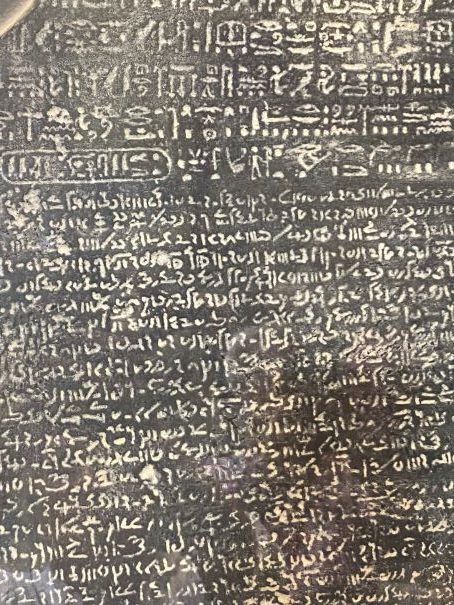
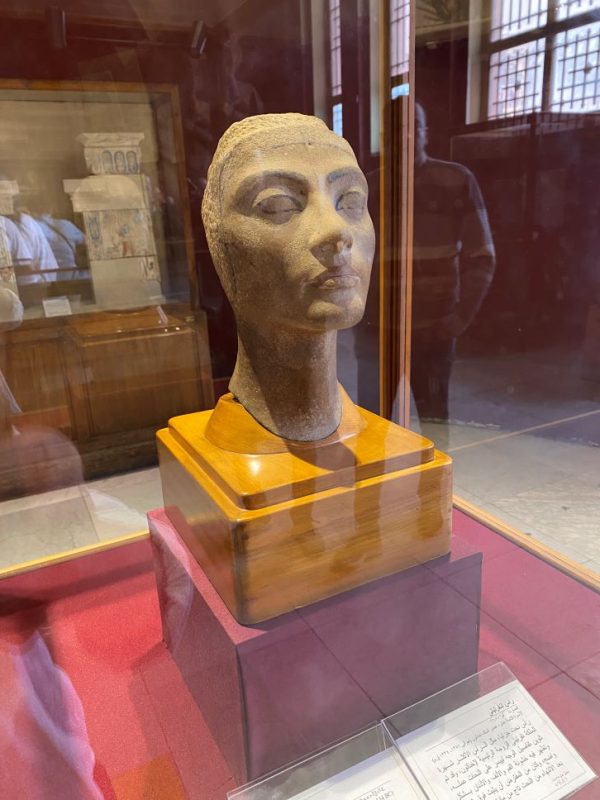
We also visited the Cairo citadel, perched atop a hill, with the impressive Mosque of Muhammed Ali (not that Muhammed) and magnificent views of the city. This was exciting as we got to see our first glimpses of the pyramids from up there…. although it was challenging to see them through the sand haze that constantly covers the city.
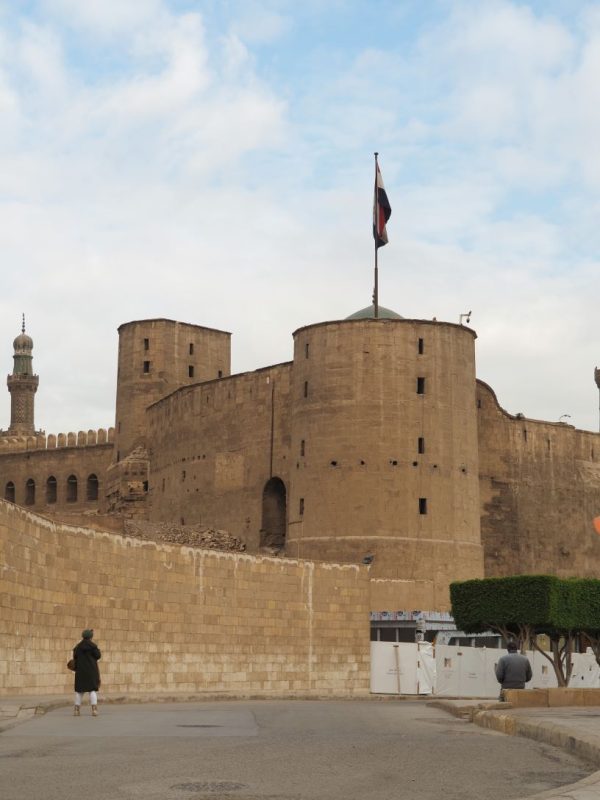
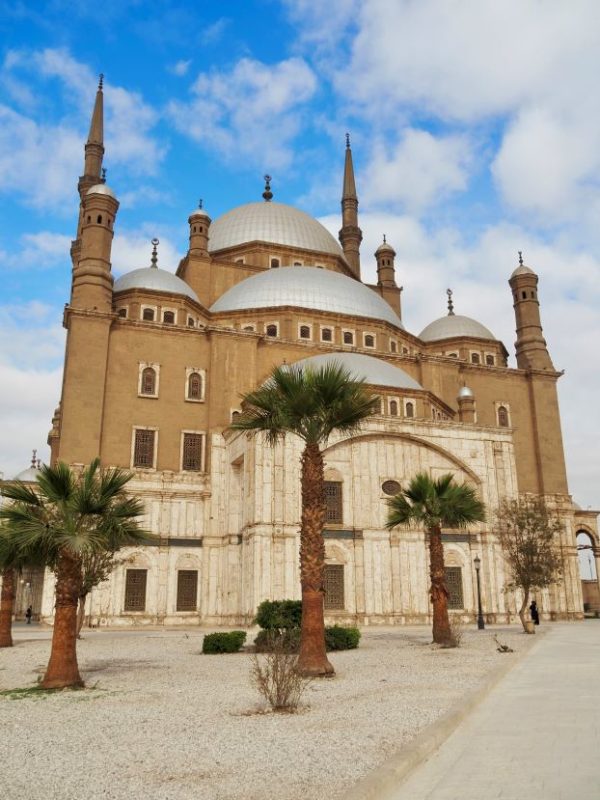
The pyramids were of course the absolute highlight for me. We saw the very first pyramid, the step pyramid, as well as the more famous pyramids of Giza. We were able to step inside one of the pyramids and view amazing hieroglyphs and paintings – bucket list-tick! We ended this amazing day viewing the great Sphinx guarding the tombs from enemies and would-be tomb raiders.
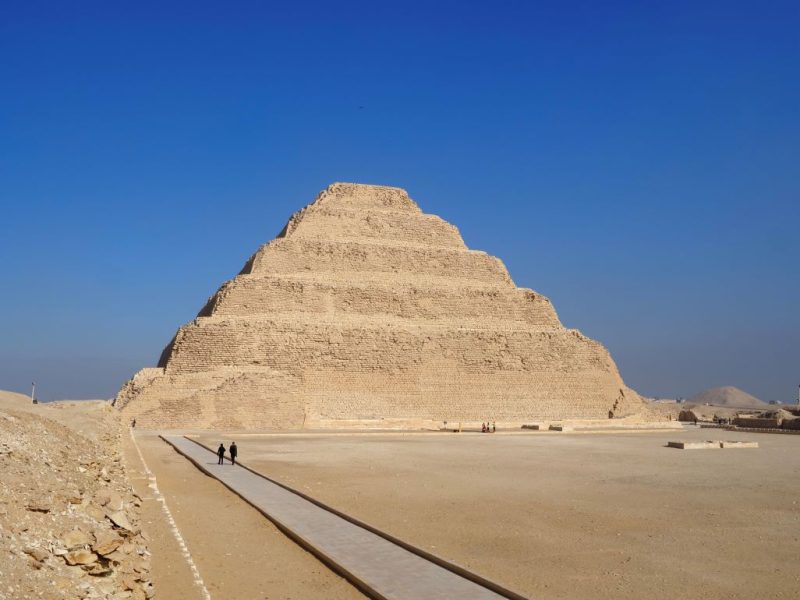
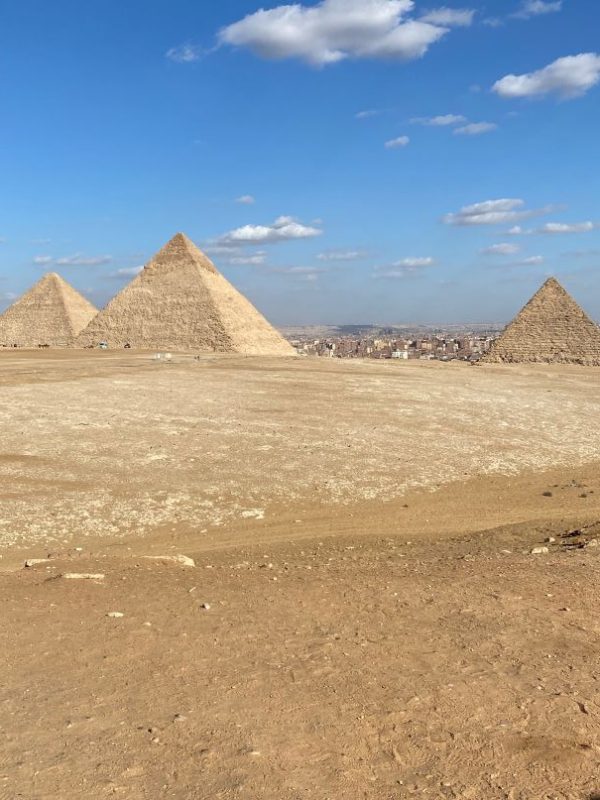
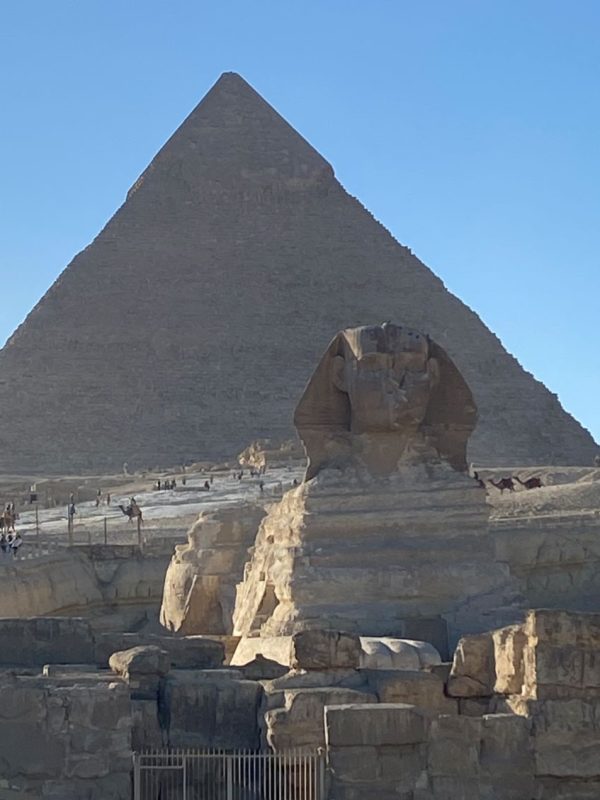
Luxor
From Cairo we took a short flight to Luxor, all included in the tour. I was more impressed with Luxor and enjoyed looking around this city. The incredible Karnak and Luxor temples are only 3 km apart, joined by the impressive Avenue of Sphinxes. We viewed Karnak temple first and Luxor temple lit up, later at night. It was amazing wandering through these ancient monuments and learning so much about them, the Egyptian people, their culture and ancient traditions, thanks to our fantastic tour guides who are Egyptologists.
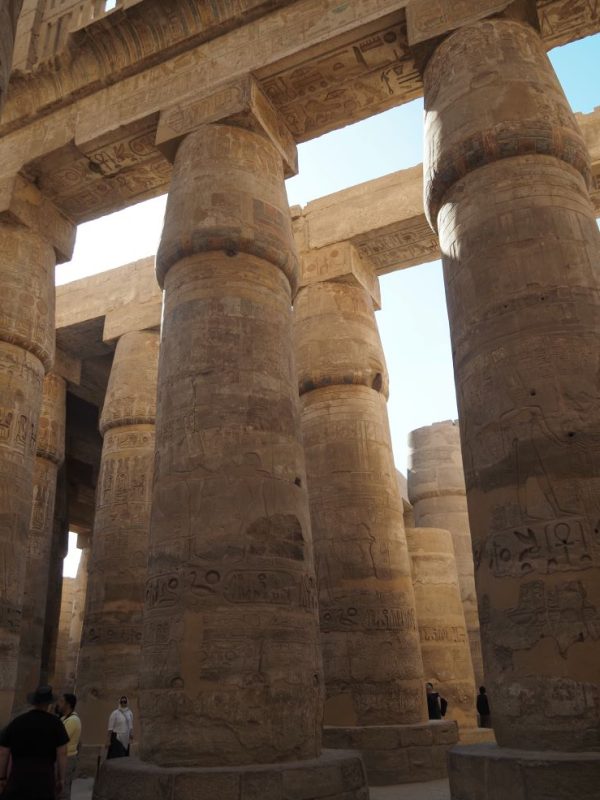
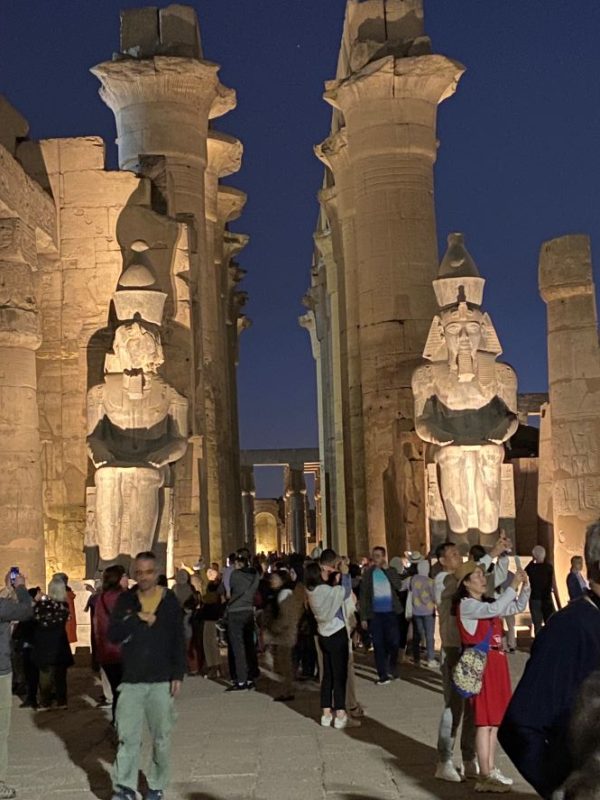
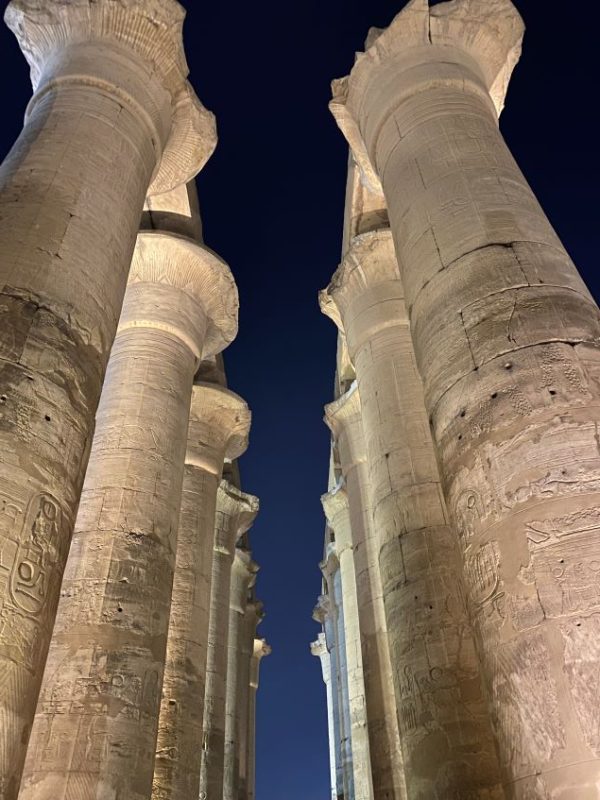
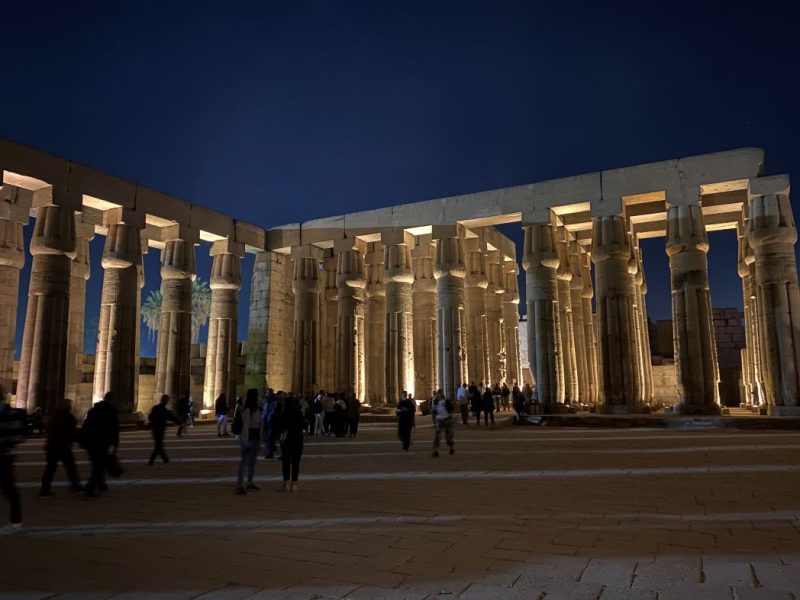
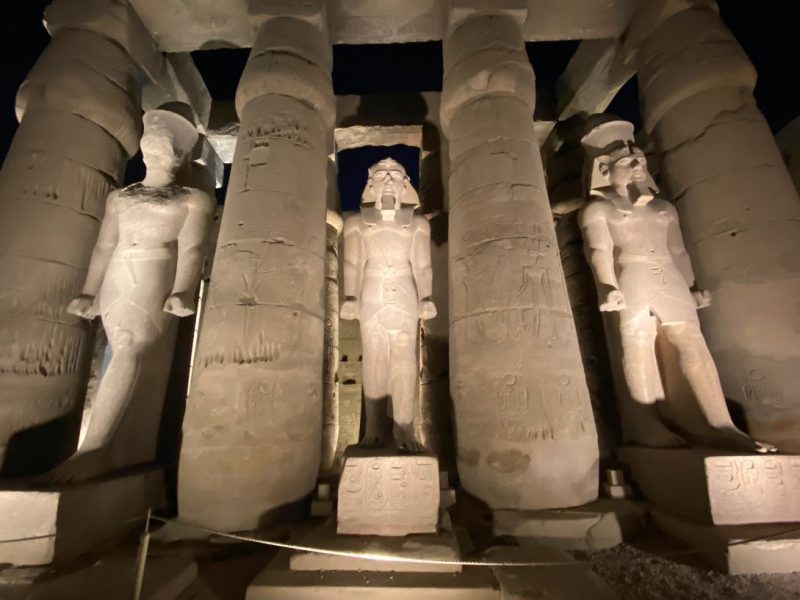
From Luxor we were supposed to cruise down river, which is actually heading north, to Qena. However, due to the low level of the river we were unable to cruise the whole way. Instead, we sailed a short distance past the temples we had viewed the previous day, did a 180-degree turn, returned to Luxor, and used buses to transport us to the Dendera temple in Qena. It was wonderful to finally be sailing on our beautiful ship, even if only for a few hours.
Dendera Temple
This amazingly well-preserved temple dates back to the 4th century BC and is located about 60km north of Luxor, in the town of Qena.
Dendera temple is dedicated to Hathor, the goddess of love, beauty and motherhood. As well as the main temple, the complex also includes an ancient Roman birthhouse and remains of a sanitorium. The image of Hathor is everywhere, as well as carvings of the god Bes, a patron of childbirth. I especially like the carvings of Hathor on each capital, atop 24 columns in the main hypostyle hall.
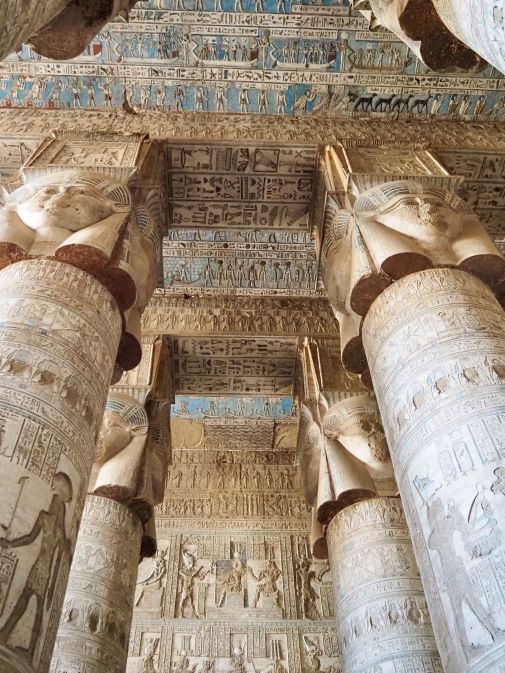
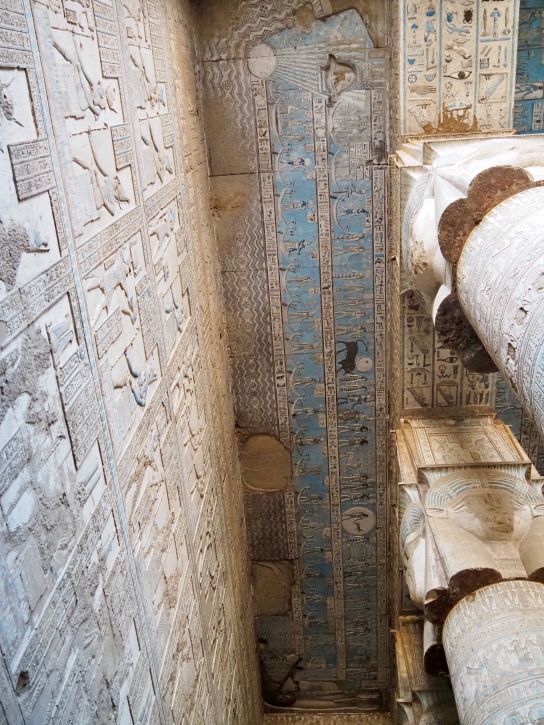
The ceiling of the temple is truly amazing, paintings of celestial, astronomical and astrological depictions decorate the hall. The colours of the reliefs are wonderful and mostly original. My favourite image was the depiction of the Goddess Nut (or night), who swallowed the sun each evening, and gave birth to it again each the morning. It starts on the ceiling on one side of the hall and finishes on the other side.
Ascend a staircase, whose walls are decorated with hieroglyphs to reach the roof. Here you find a kiosk used for various ceremonies and several other rooms. In one of these rooms, our guide pointed out the fascinating Dendera Zodiac sculpture that maps the ancient sky, showing the four cardinal points as well as astrological constellations. The sculpture is a replica with the original now housed in the Louvre.
The exterior walls of the temple are covered in carved images. On the outer rear wall, you can see images of Cleopatra and her son, beside Julius Caesar.
Do not miss this temple, it is amazing!
Valley of the Kings
One of the highlights of the trip was our Hot air balloon ride over the Valley of the Kings. It is an optional extra on the Pharoahs and pyramids tour but you only live once, right?? Up before dawn and in the balloon basket as the sun is rising over the desert Valley below is unforgettable. You get a magnificent view of the funerary tomb of Hatshepsut as well as Luxor.
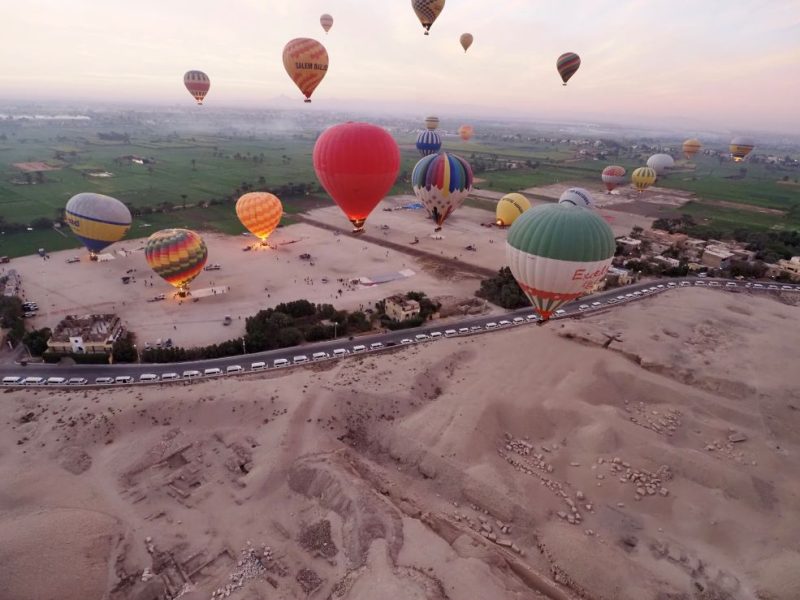
Our trip to Valley of the Kings to visit some of the tombs is one you must do. Only select tombs are open at any one time to better manage tourists and reduce damage to the sites. We entered 3 tombs in the Valley of the Kings, although more were open, we lingered longer in the ones we chose, which were Rameses IV, Tut Ankh Amun and Rameses IX. I highly recommend visiting the tombs with a guide. They are able to tell you the significance of different things that you wouldn’t understand on your own. Our guide showed us photos of particular items of interest and gave us a talk about the tomb outside before we entered, thereby leaving us to explore the tomb on our own without noisy commentary. Of particular interest to me was the tomb of Tut Ankh Amun. Even though the treasures are now in museums, his mummy is on display in the tomb and the burial chamber had amazing paintings on the walls. I especially liked the explanation of the 12 monkeys painting – the ancient Egyptians realized that monkeys urinate once every hour, so the 12 monkeys represent the 12 hours of night that the dead king must travel through to reach Osiris and new life.
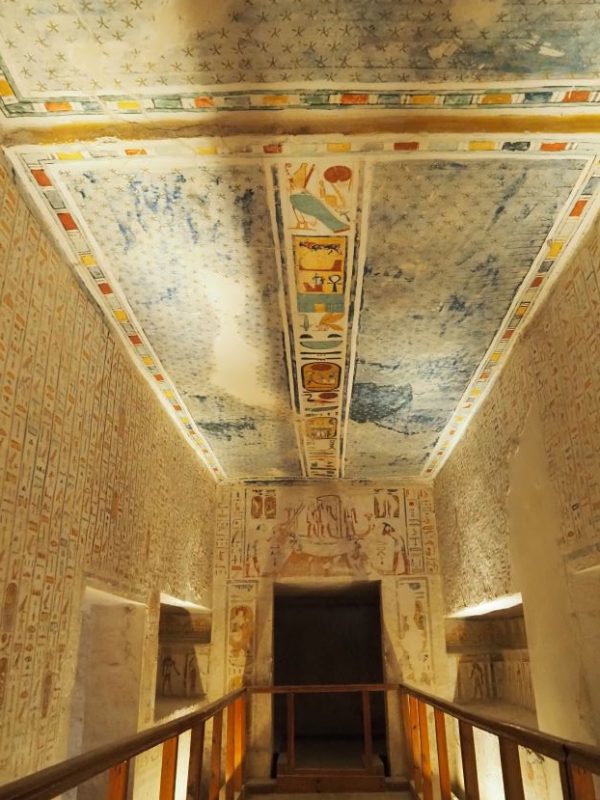
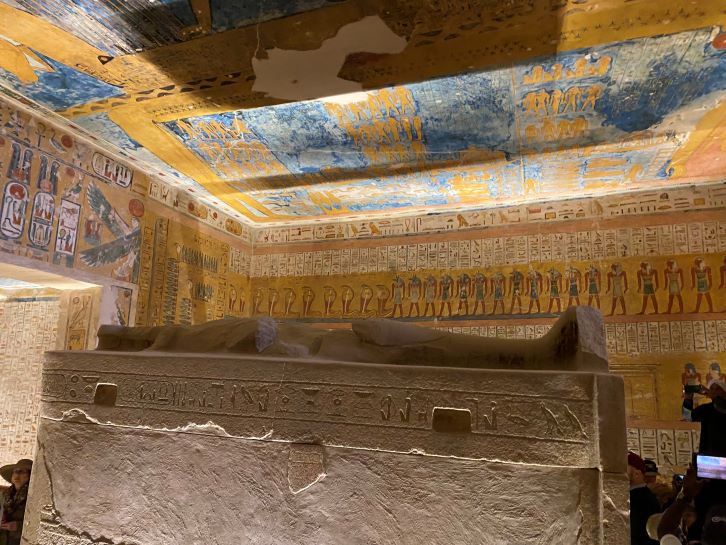
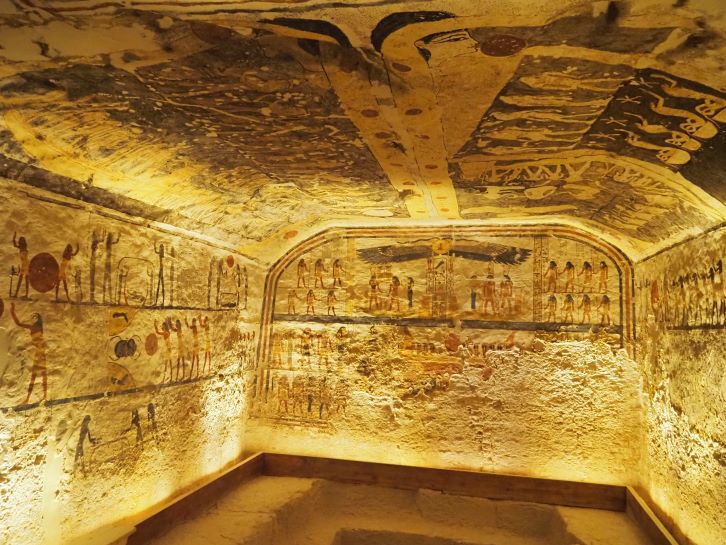
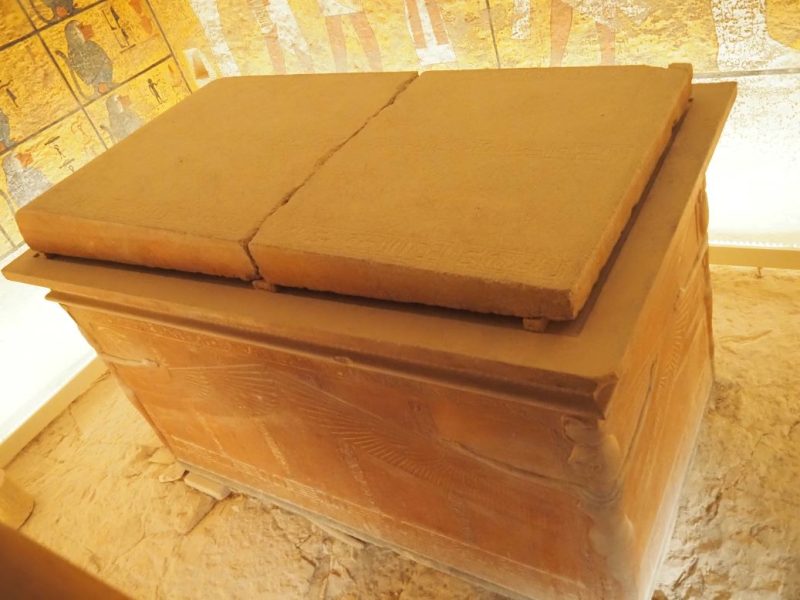
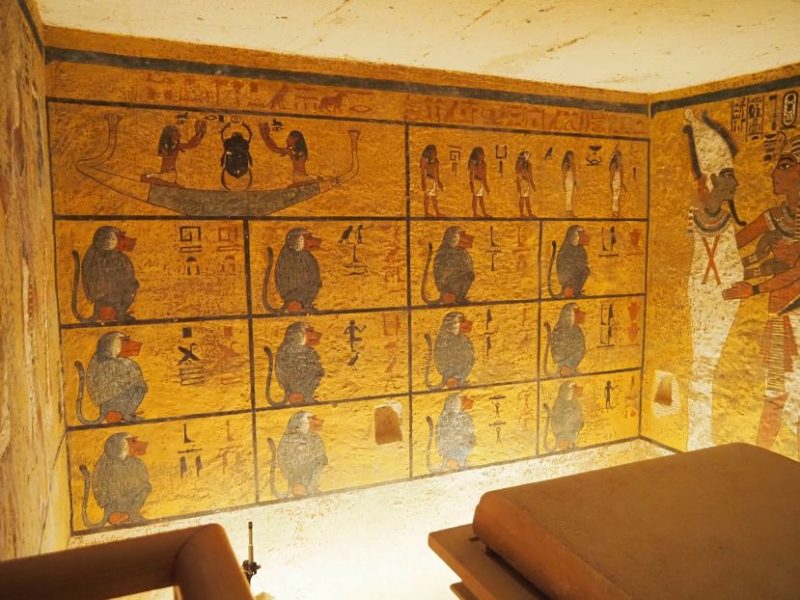

Before we left The Valley of the Kings, we stopped off for a quick tour of Howard Carter’s house. The man who discovered and was in charge of the excavation of King Tut’s tomb, lived nearby in a mud brick house. He lived simply it seemed, his house did include a dark room, where he developed photographs documenting his discoveries.
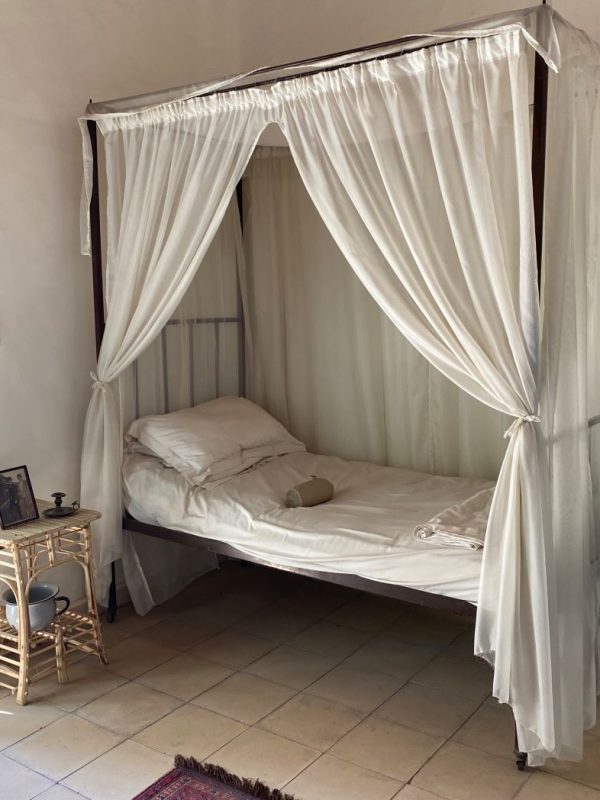
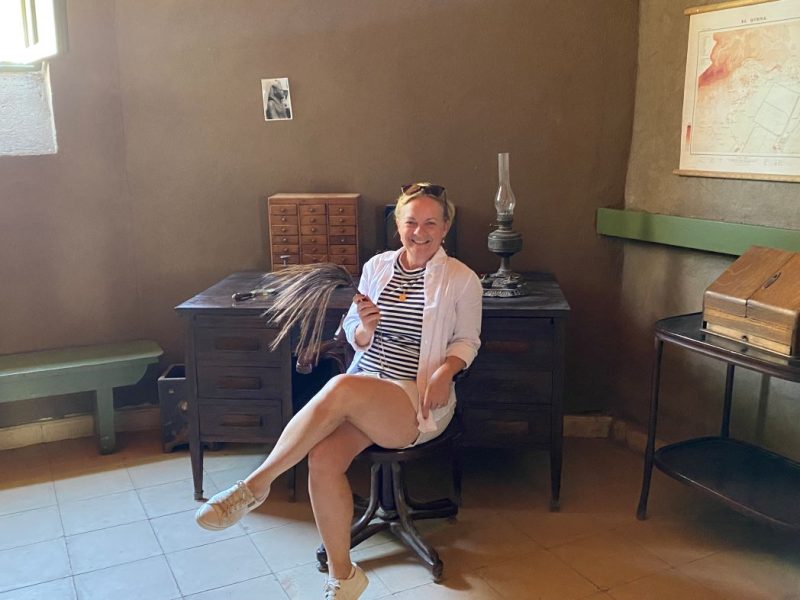
Valley of the Queens
In the Valley of the Queens, the highlight for me was definitely the tomb of Nerfertari, the wife of Rameses II. The colours in the paintings and reliefs inside the tomb are wonderful. This temple has timed entries, you are only given 10 minutes inside the tomb. Consider the cost of the entry fee for just 10 minutes inside. Then again, how often is one in Egypt?? Just look at these paintings!
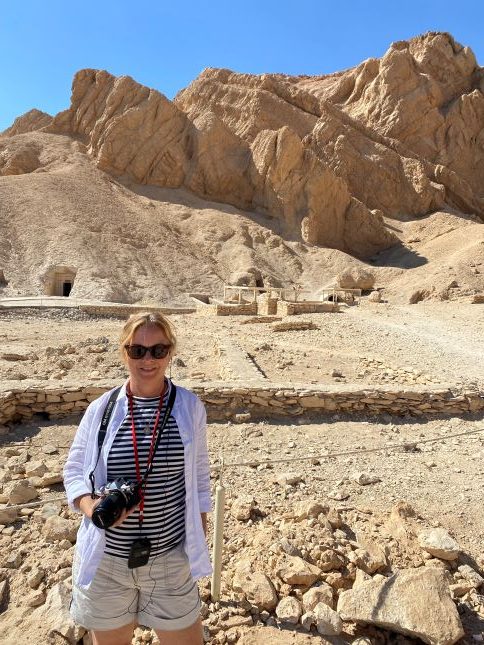
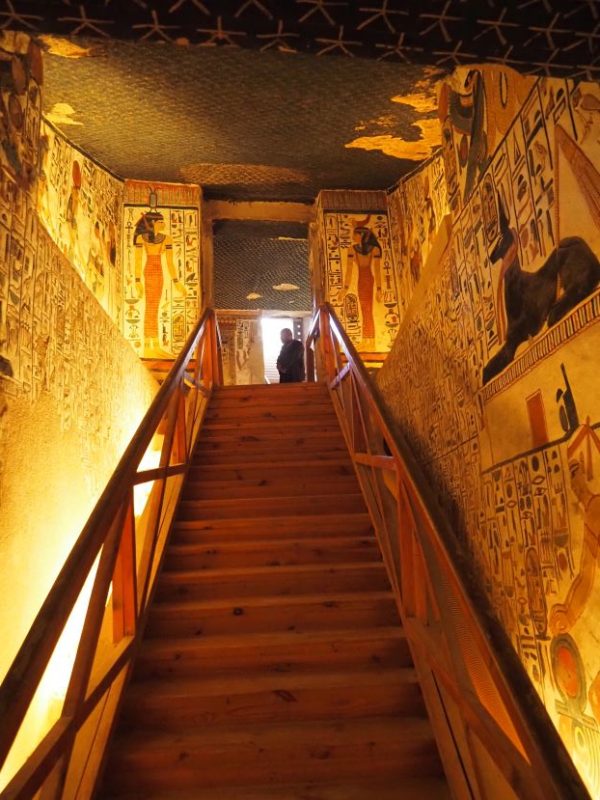

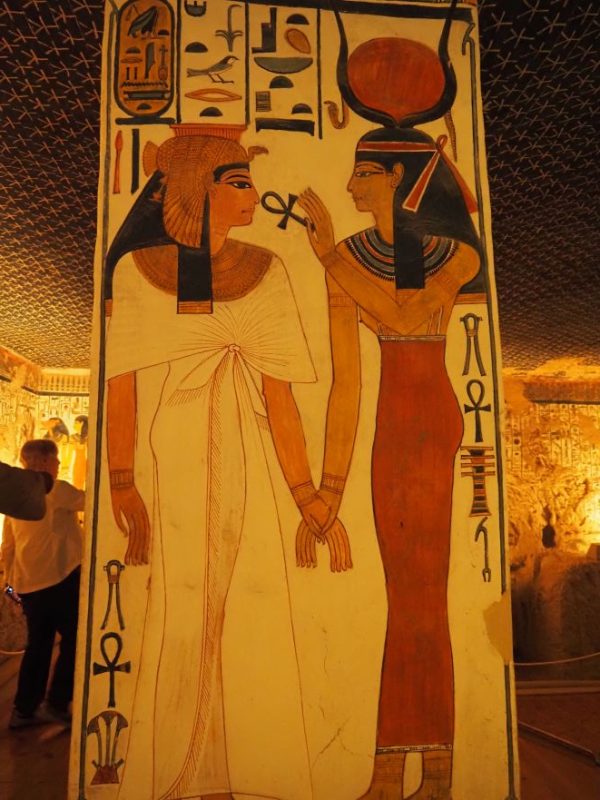
Located near the Valley of the Kings is the Mortuary Temple of Hatshepsut. This complex is huge, with 3 massive terraces. It honours an Egyptian Queen who ruled as a King, hence the location so close to the Valley of Kings. On the upper terrace, colossal statues of Hatshepsut wearing the double crown of upper and lower Egypt, stand erect overlooking the valley below.
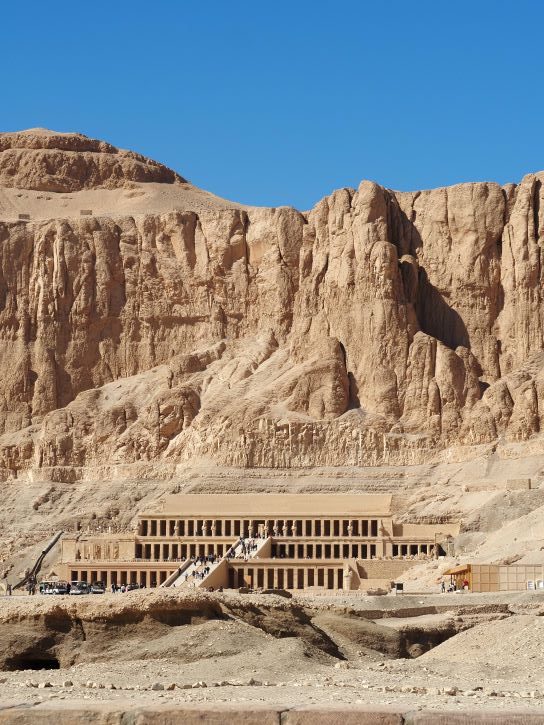
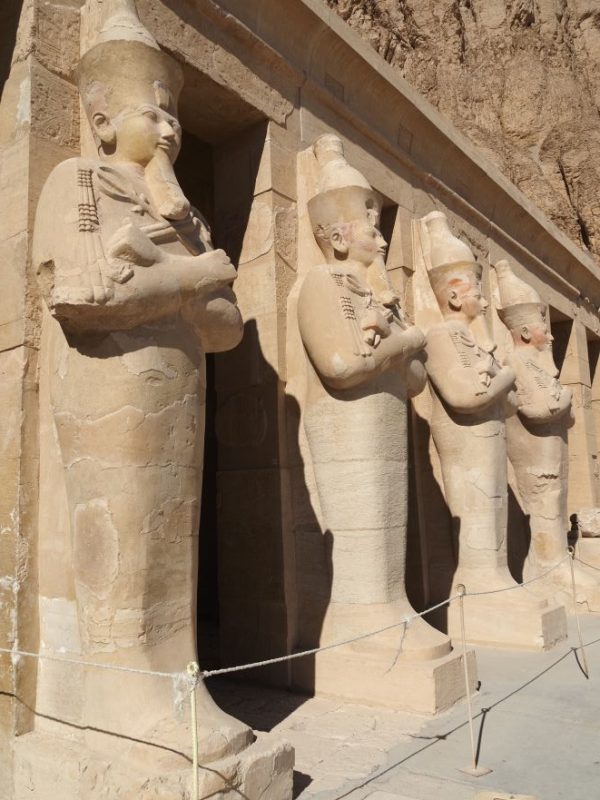
Aswan
Some lovely sailing time saw us arrive in Aswan.
Abu Simbel
An optional excursion was a visit to Abu Simbel, which required a short flight, but was a highlight. This site consisting of two massive temples carved out of the rock, is dedicated to Rameses II and his wife, Nefertari. The amazing fact is that the whole temple was in danger of being destroyed by rising levels of the Nile after the construction of the new dam, so after an international fundraising campaign, it was rescued. The whole temple complex was cut up into pieces and put back together again on higher ground. Even the colossal statue missing its head was reconstructed in the exact same way, with its head laying by its feet. The surrounding rock the temples they were built into, was also reconstructed. Amazing! To repay those countries that helped to fund the rescue of the temple, Egypt gifted them priceless Egyptian artifacts. In the MET museum in New York, for example, is the temple of Dendur, a gift from Egypt.
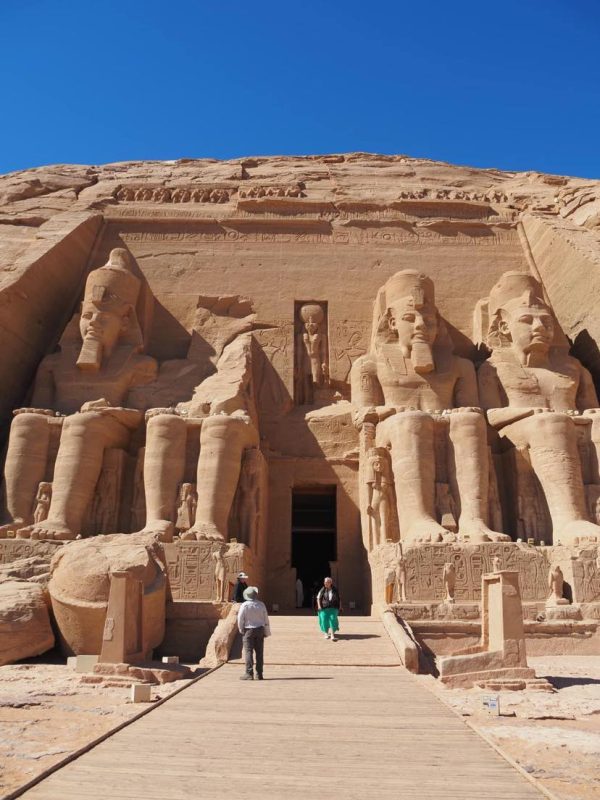
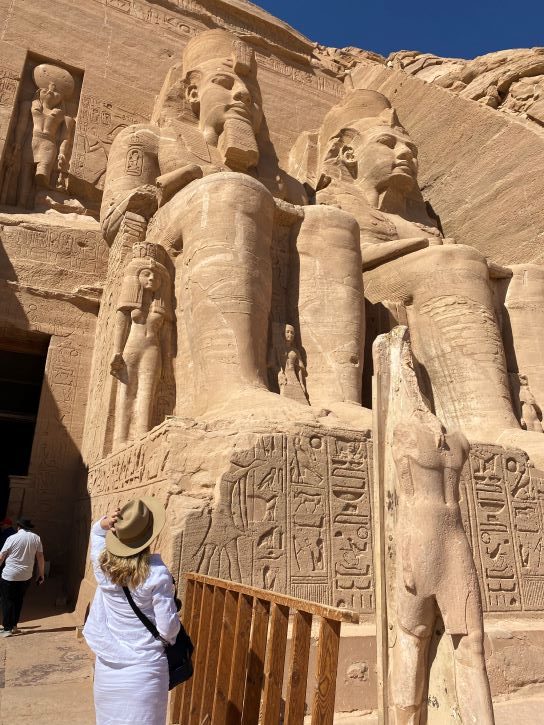
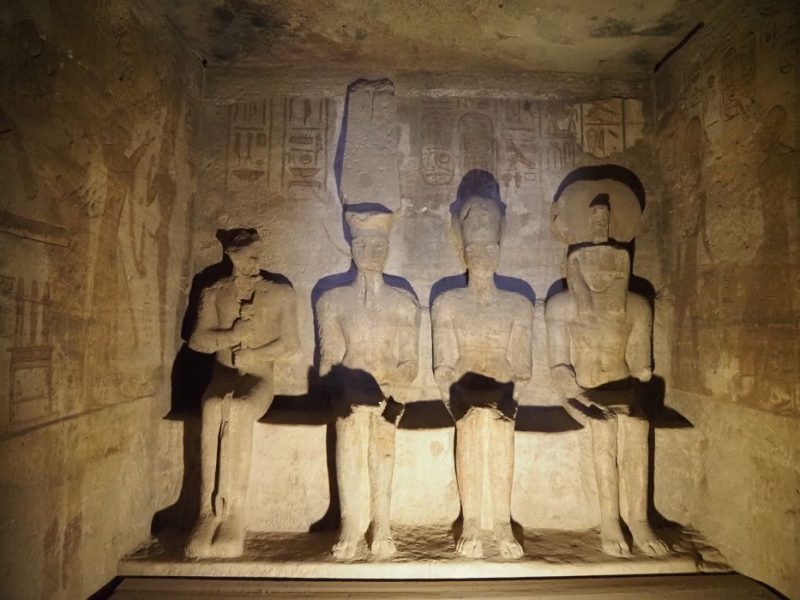
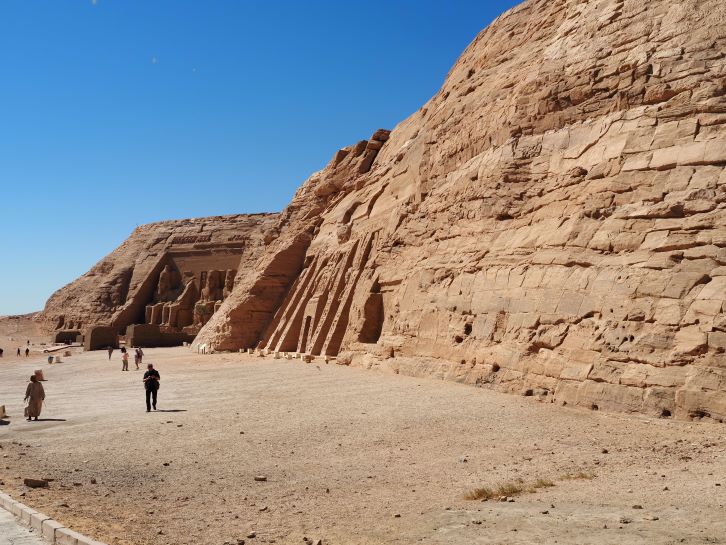
The temple of Rameses II contains many images of the Pharoah in military campaigns. The temple was built with such accuracy that on only 2 days a year, the sun’s rays travel the length of the temple to shine on the faces of statues of 4 kings. How is that for some ancient engineering!?!
The temple dedicated to Nefertari is smaller, but no less impressive. The paintings inside don’t rival her tomb in the Valley of the Queens but are still beautiful.
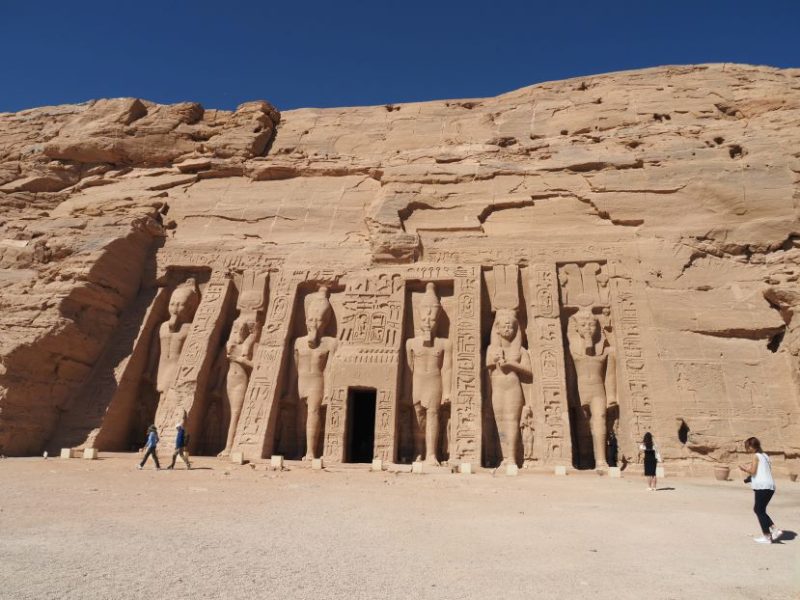
In between viewing all the temples, we also had time to explore local villages and experience Egyptian culture. I enjoyed visiting a local school (once a teacher, always a teacher!) One thing I did NOT enjoy was having to deal with the local vendors bombarding you at the entrance and exit of every tourist attraction! Read my post on how to deal with these persistent locals here. No photos of these pesky vendors as I was too scared to get my camera out, lest they insisted on payment for taking their photo.
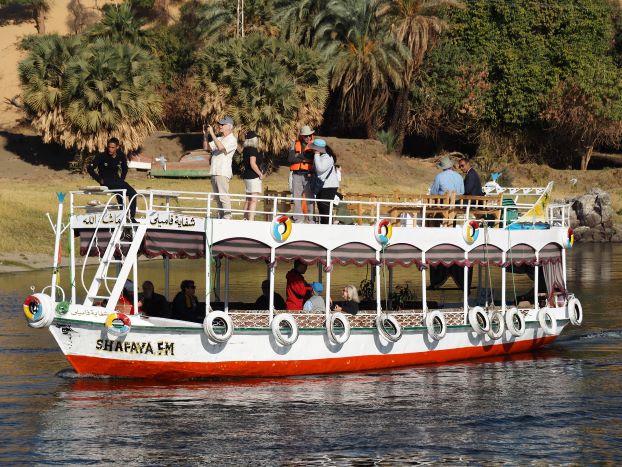
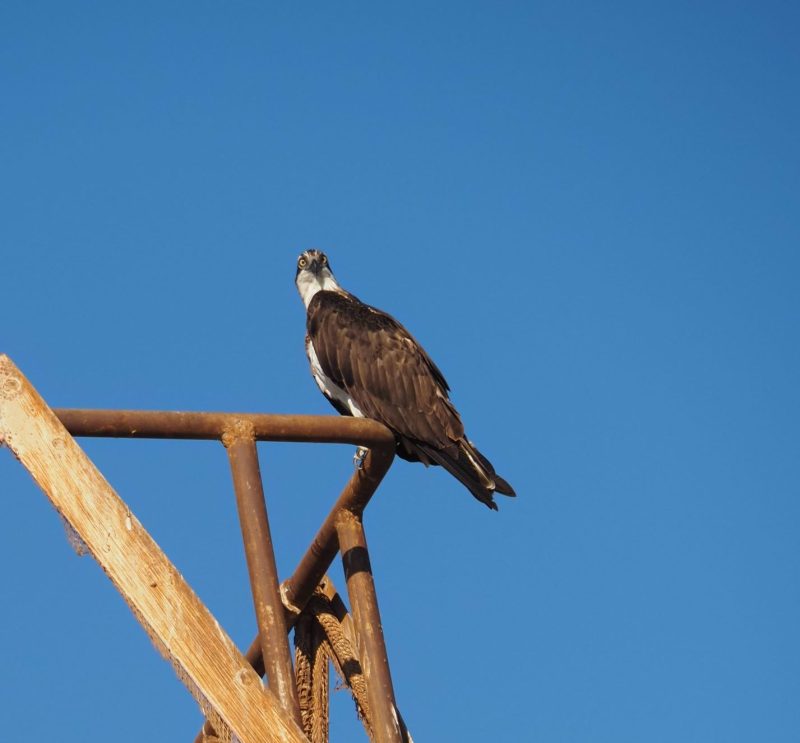
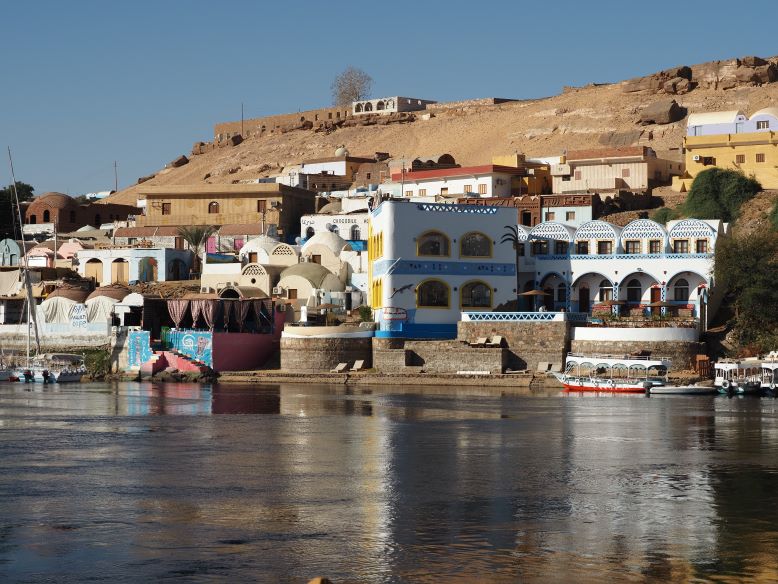
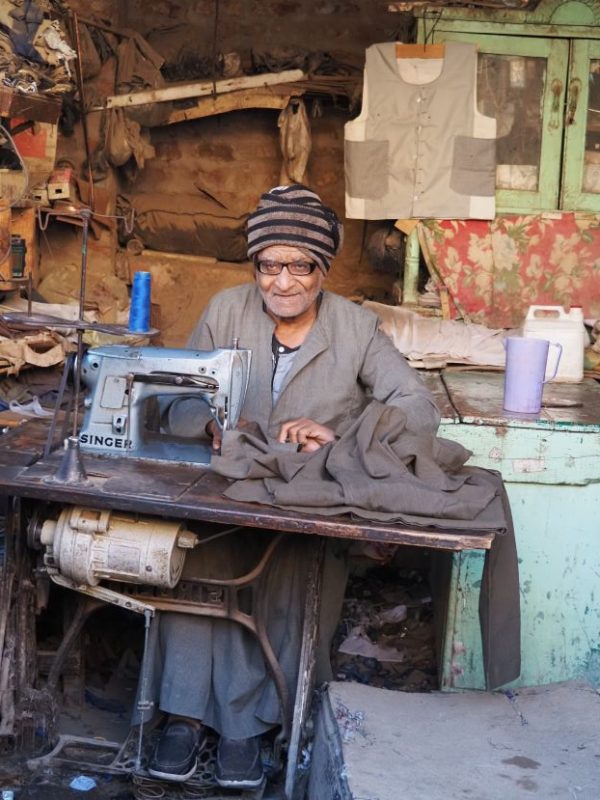
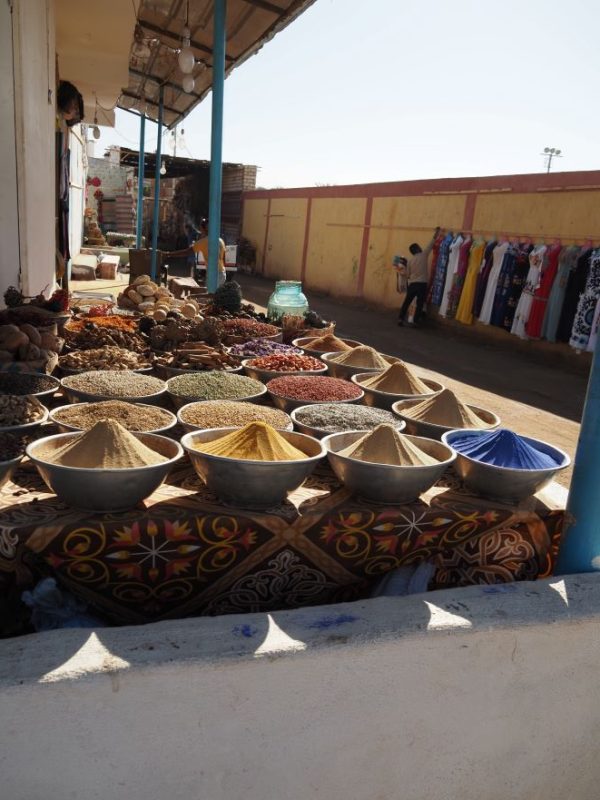
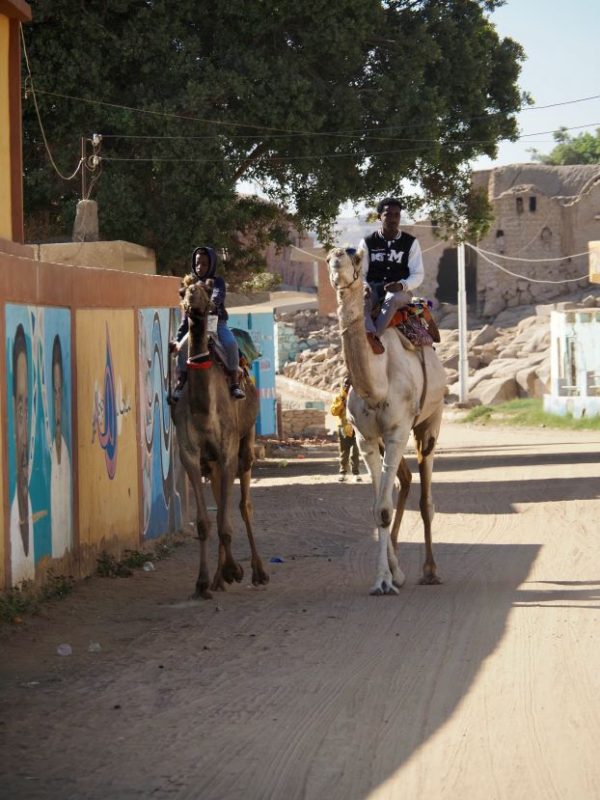
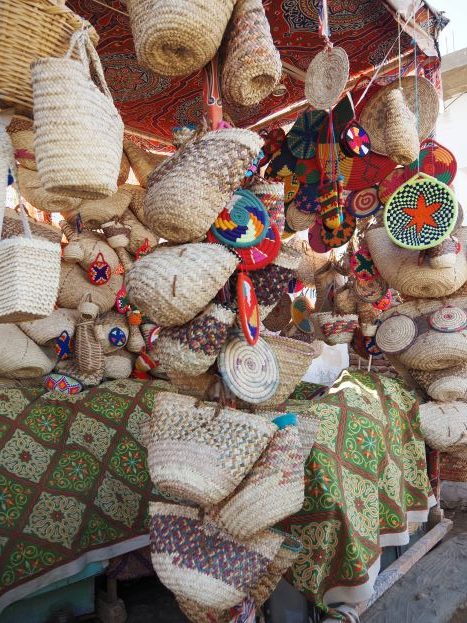
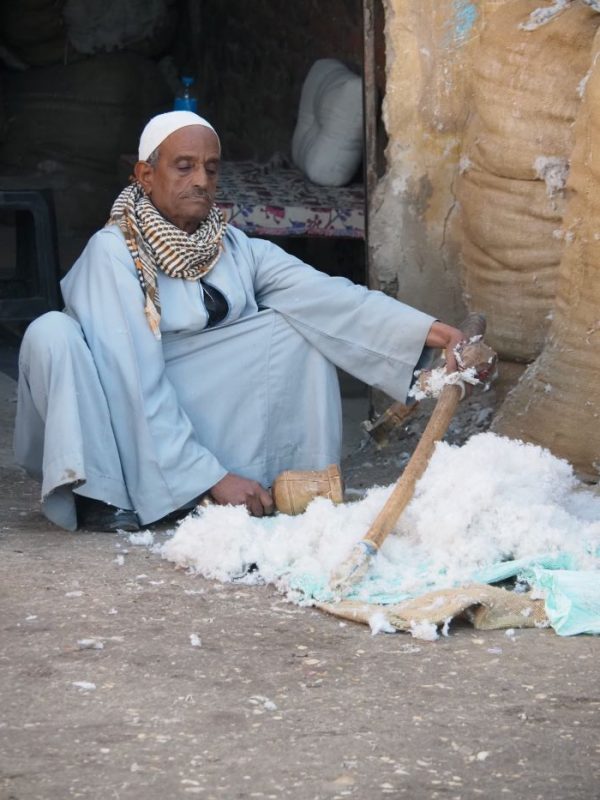
Philae Temple
Philae temple complex on the Nile island of Philae, is lucky to have survived flooding after the construction of the old Aswan Dam. The new dam saw water levels drop and the partially submerged temple re-emerged, but with significant water damage. With the construction of the Aswan High Dam, the temple was going to be completely lost. So, not unlike the Abu Simbel complex, the decision was made to rebuild the shrines on higher ground – reopening to visitors in 1980. The complex contains a temple dedicated to Isis, as well as smaller temples dedicated to Hathor, Osiris and Horus. Isis was worshipped by Egyptians and Nubians who believed she had magical powers that brought life back to her husband Osiris and saved her son Horus from a deadly snake bite. The temple has magnificent floral capitals atop the columns.
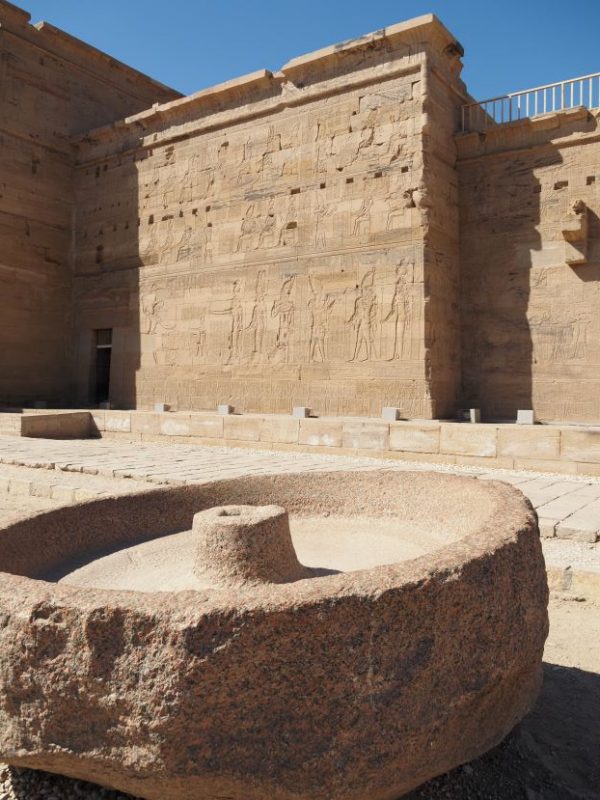
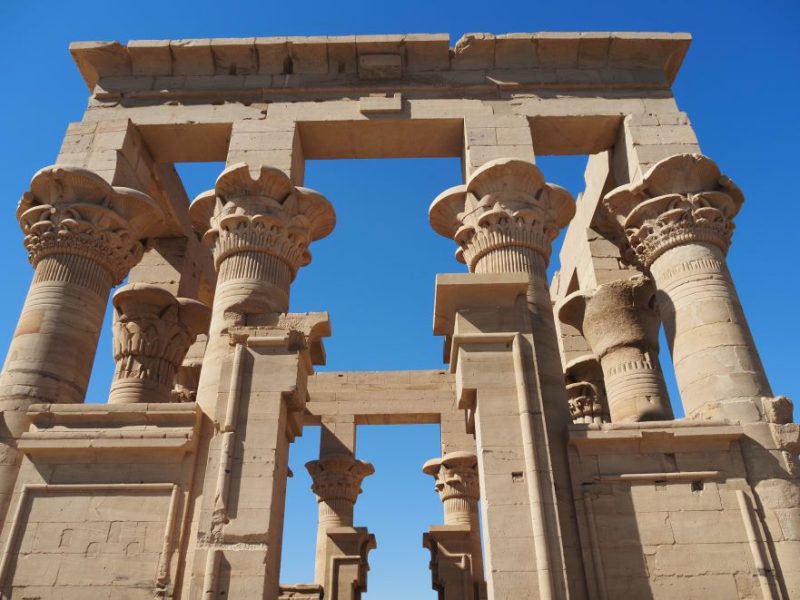
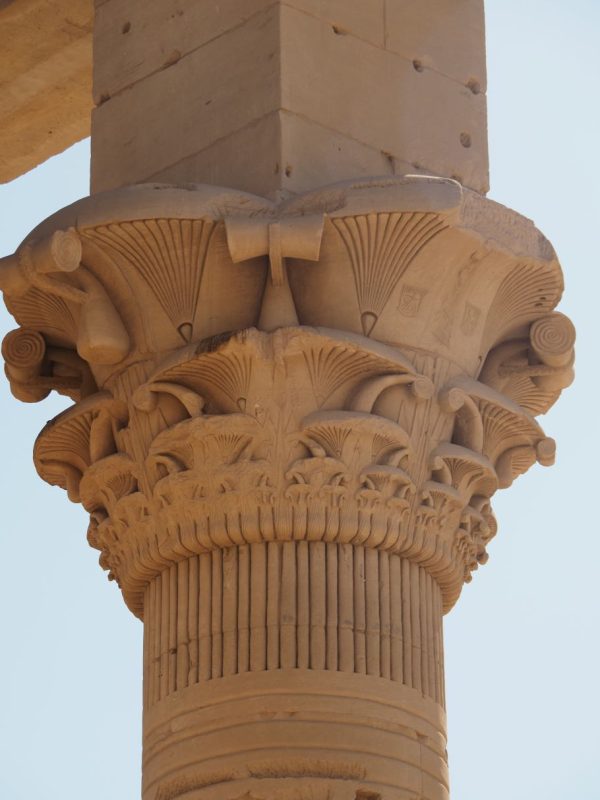
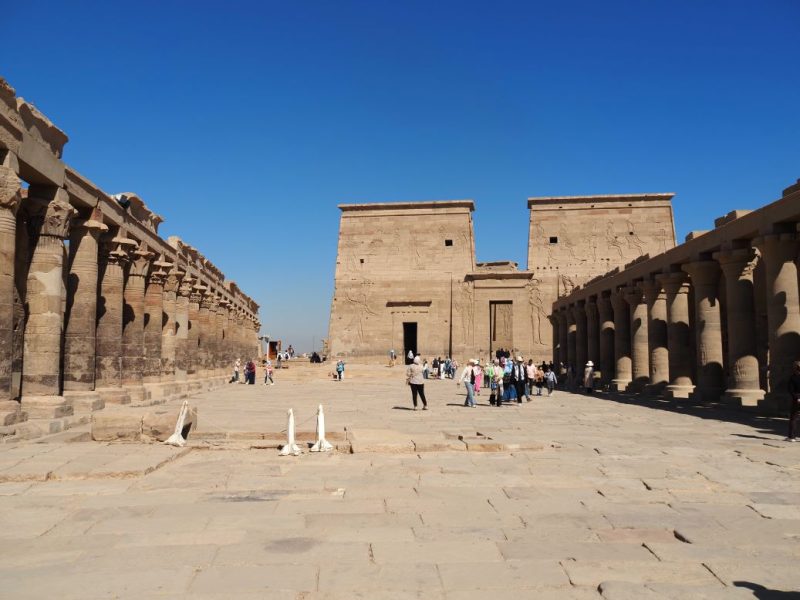
Kom Ombo Temple Complex
While in Aswan, we visited Kom Ombo island with the twin temples. One temple is dedicated to Sobek, the crocodile headed God and one temple is dedicated to Horus, the falcon headed God. There are some important features to note in this temple.
There is a relief called the Festival Calendar, that clearly shows the different seasons. The ancient Egyptian calendar consisted of three seasons of four months, each linked to the agricultural cycle. The inundation season, the growing season and the harvest season. Amazing to think of how knowledgeable and intelligent this ancient civilization was. There is also a relief showing an elephant (elephants in ancient Egypt!) and Cleopatra’s cartouche (that is her name in hieroglyphs). One of the souvenirs I bought myself was my own cartouche on a sterling silver necklace. I also indulged and bought some art from a visit to a papyrus factory- the Goddess Isis spreading her wings in all her glory (I have had a bit of a fascination with the Goddess Isis since that show in the 70’s). We also squeezed in a visit to an Egyptian carpet making company. The carpets were beautiful, but a little out of our price range.
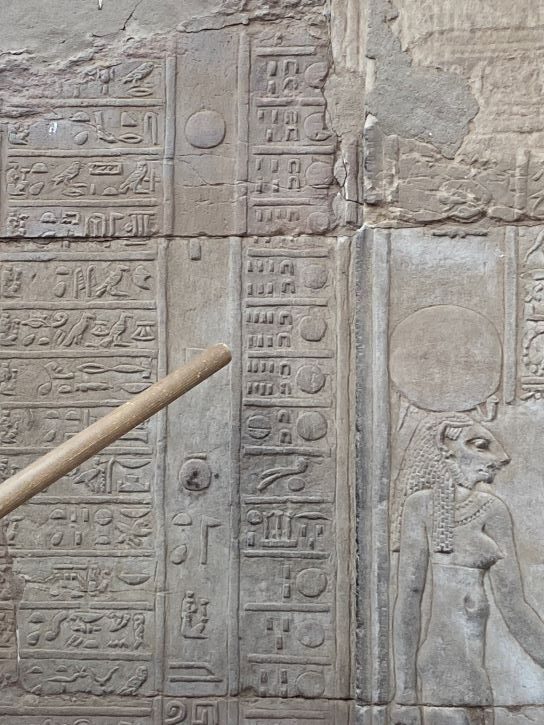
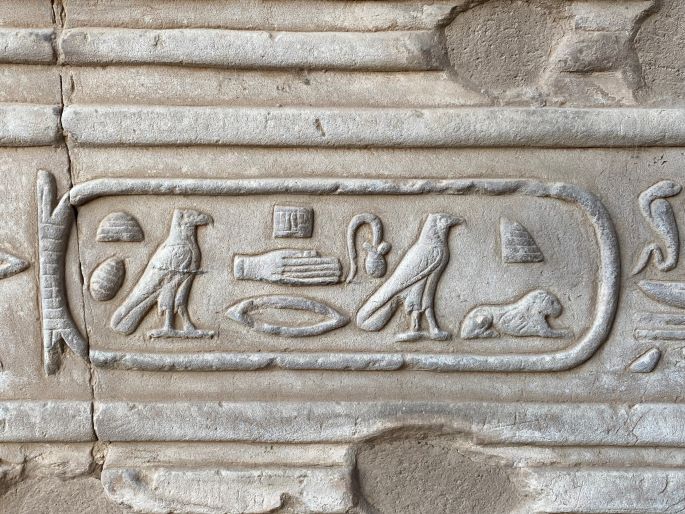
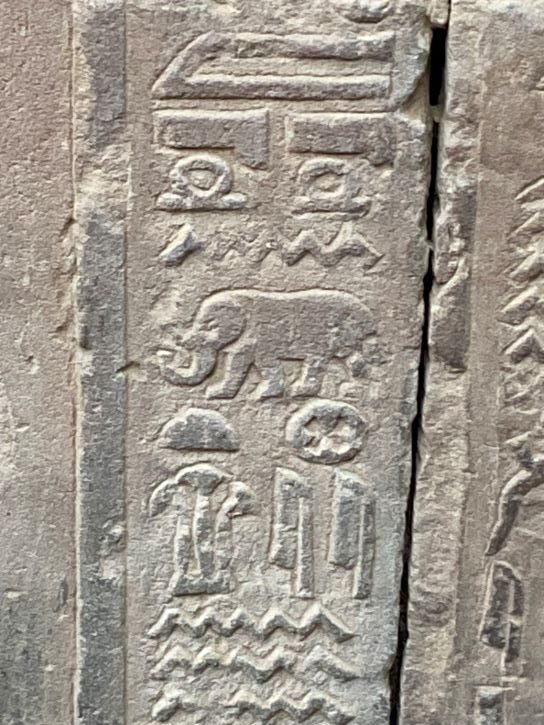
Also located nearby is a museum dedicated to Sobek, the crocodile headed God. I was disappointed not see any live crocodiles sunning themselves on the banks of the Nile. If you are like me and expected to see them everywhere, you will be disappointed. Once upon a time, however, the Nile was infested with crocs and the Ancient Egyptians were naturally scared of them. They believed if they worshiped the creatures then they wouldn’t attack them. In the temple at Kom Ombo, you will see may images of the crocodile-headed God and pools where crocodiles were raised. I especially liked the chamber built to resemble a crocodile head. In the museum, you will see many mummified crocodiles found in the area! Fascinating!
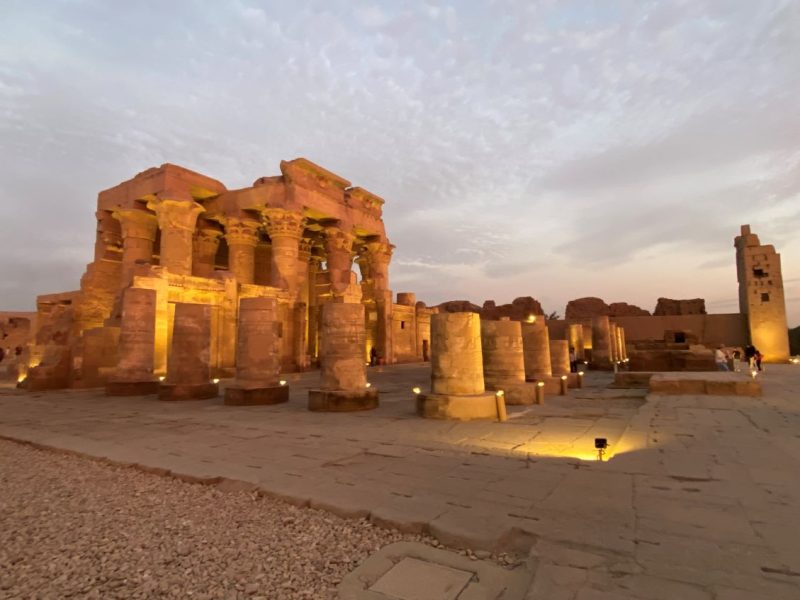
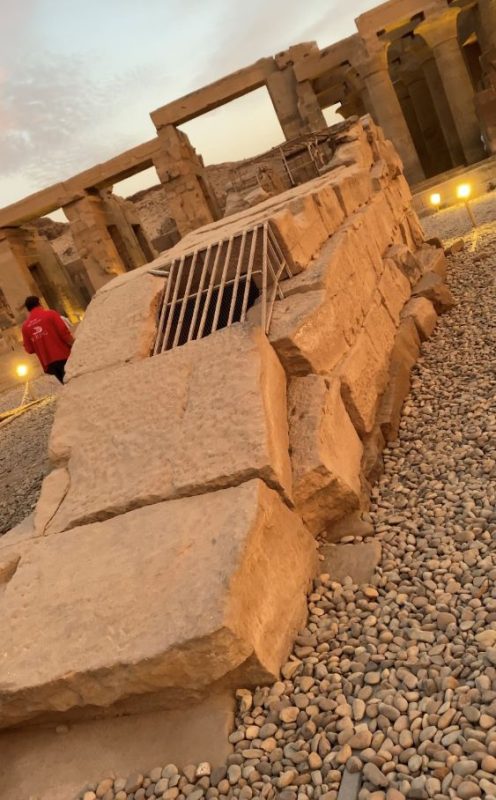
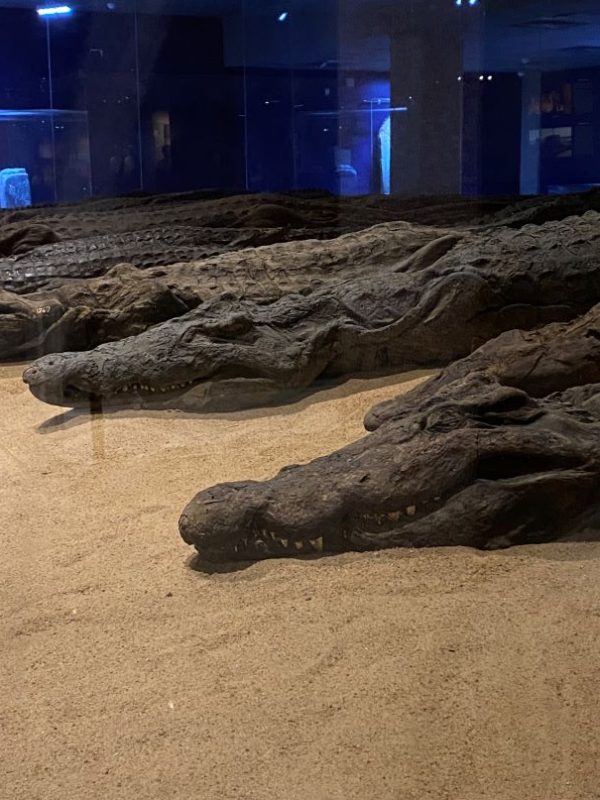
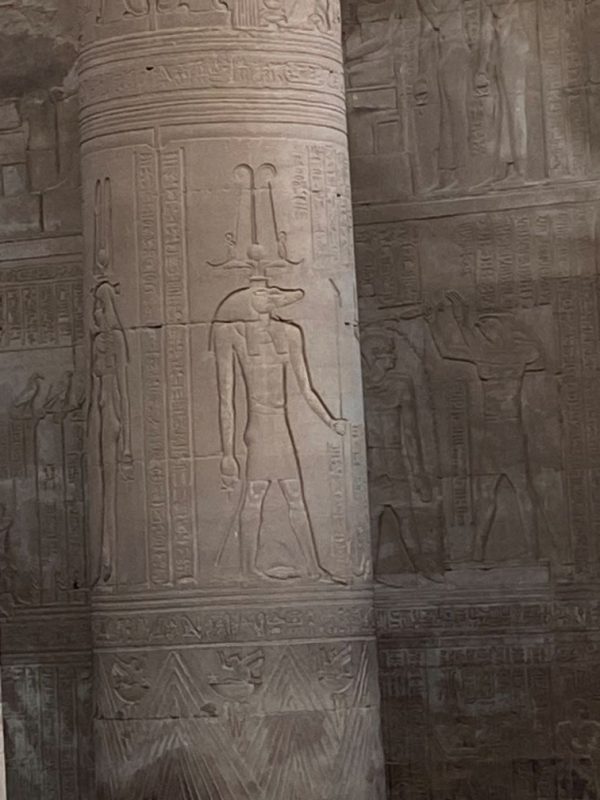
Our final stop was to visit the Temple of Horus, the Falcon-headed God, in Edfu. Taking a mere 180 years to complete construction, the entrance to this temple has a monumental gate, with two enormous towers either side. Once inside the gate, you enter a huge courtyard surrounded on three sides by 32 columns.
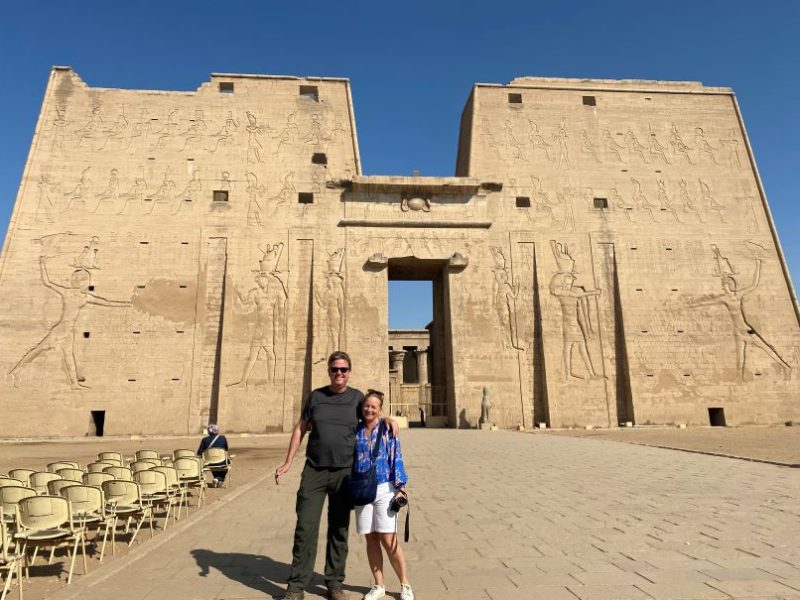
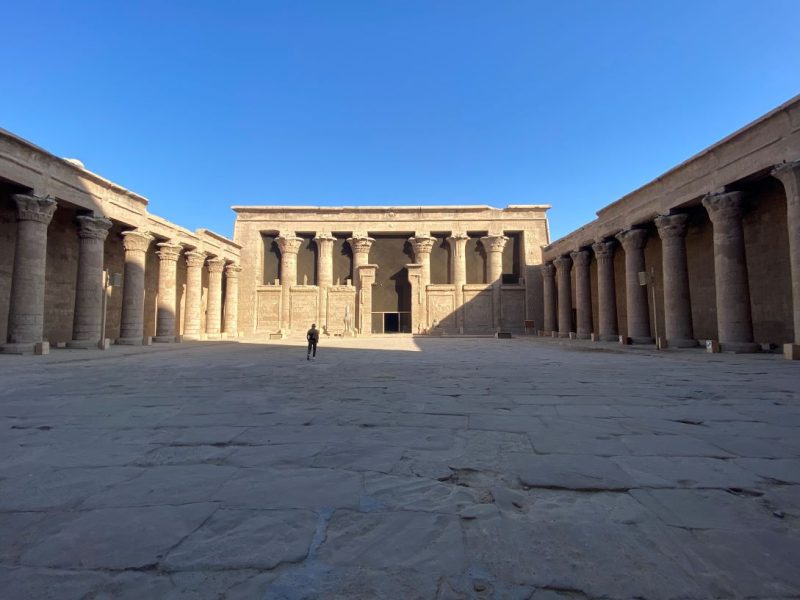
Much like Scotland with castles, Egypt has temples aplenty and it can be a little confusing remembering all the Gods and Goddesses and which temple is dedicated to which God. I highly recommend doing some reading on the subject before you go – maybe draw up an Egyptian God family tree!
From Aswan we made our way back to Cairo for the flight home. Our choice to go with Viking was a decision well made. Read my review of our Viking experience here. I have been fascinated with the history, the ancient structures, the treasures and the stories of the Kings and Queens of Ancient Egypt since my high school days. To see it all with my own eyes was unforgettable. Yes, it was expensive, but the comfort and security we felt at all times was well worth the cost.

